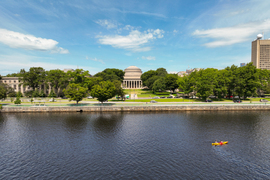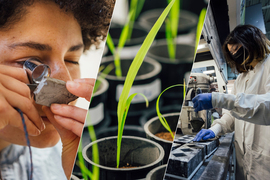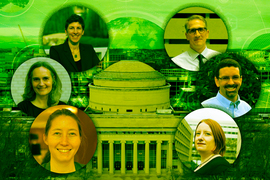MIT is preparing a major campus-wide effort to develop technological, behavioral, and policy solutions to some of the toughest problems now impeding an effective global climate response. The Climate Project at MIT, as the new enterprise is known, includes new arrangements for promoting cross-Institute collaborations and new mechanisms for engaging with outside partners to speed the development and implementation of climate solutions.
MIT News spoke with Richard K. Lester, MIT’s vice provost for international activities, who has helped oversee the development of the project.
Q: What is the Climate Project at MIT?
A: In her inaugural address last May, President Kornbluth called on the MIT community to join her in a “bold, tenacious response” to climate change. The Climate Project at MIT is a response to that call. It aims to mobilize every part of MIT to develop, deliver, and scale up practical climate solutions, as quickly as possible.
At MIT, well over 300 of our faculty are already working with their students and research staff members on different aspects of the climate problem. Almost all of our academic departments and more than a score of our interdepartmental labs and centers are involved in some way. What they are doing is remarkable, and this decentralized structure reflects the best traditions of MIT as a “bottom up,” entrepreneurial institution. But, as President Kornbluth said, we must do much more. We must be bolder in our research choices and more creative in how we organize ourselves to work with each other and with our partners. The purpose of the Climate Project is to support our community’s efforts to do bigger things faster in the climate domain. We will have succeeded if our work changes the trajectory of global climate outcomes for the better.
I want to be clear that the clay is still wet here. The Climate Project will continue to take shape as more members of the MIT community bring their excellence, their energy, and their ambition to bear on the climate challenge. But I believe we have a vision and a framework for accelerating and amplifying MIT’s real-world climate impact, and I know that President Kornbluth is eager to share this progress report with the MIT community now to convey the breadth and ambition of what we’re planning.
Q: How will the project be organized?
A: The Climate Project will have three core components: the Climate Missions; their offshoots, the Climate Frontier Projects; and Climate HQ. A new vice president for climate will lead the enterprise.
Initially there will be six missions, which you can read about in the plan. Each will address a different domain of climate impact where new solutions are required and where a critical mass of research excellence exists at MIT. One such mission, of course, is to decarbonize energy and industry, an area where we estimate that about 150 of our faculty are already working.
The mission leaders will build multidisciplinary problem-solving communities reaching across the Institute and beyond. Each of these will be charged with roadmapping and assessing progress toward its mission, identifying critical gaps and bottlenecks, and launching applied research projects to accelerate progress where the MIT community and our partners are well-positioned to achieve impactful results. These projects — the climate frontier projects — will benefit from active, professional project management, with clear metrics and milestones. We are in a critical decade for responding to climate change, so it’s important that these research projects move quickly, with an eye on producing real-world results.
The new Climate HQ will drive the overall vision for the Climate Project and support the work of the missions. We’ve talked about a core focus on impact-driven research, but much is still unknown about the Earth’s physical and biogeochemical systems, and there is also much to be learned about the behavior of the social and political systems that led us to the very difficult situation the world now faces. Climate HQ will support fundamental research in the scientific and humanistic disciplines related to climate, and will promote engagement between these disciplines and the missions. We must also advance climate-related education, led by departments and programs, as well as policy work, public outreach, and more, including an MIT-wide student-centric Climate Corps to elevate climate-related, community-focused service in MIT’s culture.
Q: Why are partners a key part of this project?
A: It is important to build strong partners right from the very start for our innovations, inventions, and discoveries to have any prospect of achieving scale. And in many cases, with climate change, it’s all about scale.
One of the aims of this initiative is to strengthen MIT’s climate “scaffolding” — the people and processes connecting what we do on campus to the practical world of climate impact and response. We can build on MIT’s highly developed infrastructure for translation, innovation, and entrepreneurship, even as we promote other important pathways to scale involving communities, municipalities, and other not-for-profit organizations. Working with all these different organizations will help us build a broad infrastructure to help us get traction in the world. On a related note, the Sloan School of Management will be sharing details in the coming days of an exciting new effort to enhance MIT’s contributions in the climate policy arena.
MIT is committing $75 million, including $25 million from Sloan, at the outset of the project. But we anticipate developing new partnerships, including philanthropic partnerships, to increase that scope dramatically.










